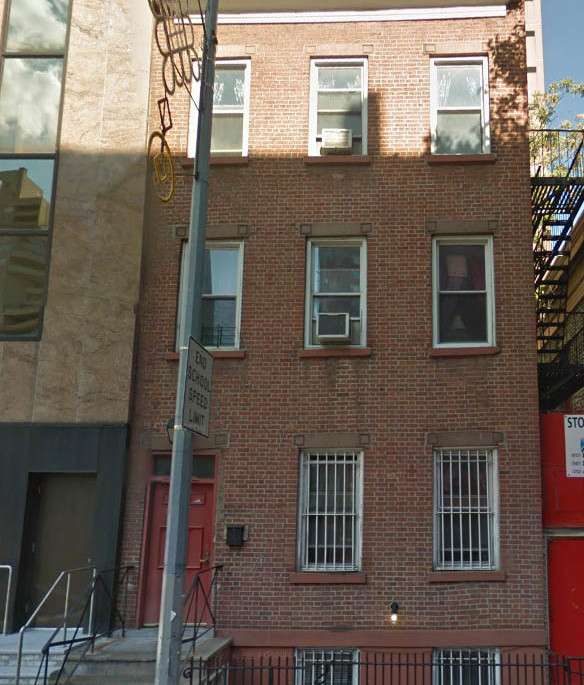2 Oliver Street, Manhattan
Address: 2 Oliver Street
Constructed: 1821
LPC Action: Calendared 1966
LPC Backlog Hearing: Removed from the calendar without prejudice
LPC- Fact Sheet | Research File
2 Oliver Street is also a federal style house, built in 1821, with a third story added around 1850. Its simple design and features reflects characteristics representative of many such federal-era residences, and the third story addition is done in a manner quite typical for such early relics of New York’s first wave of urban development. The building is additionally significant for having served as the home of James O’Donnell, one of the first trained architects in America. O’Donnell worked on the nearby Fulton Street Market while living at 2 Oliver Street, and later moved to Montreal to design the Basilica of Notre Dame. Like 57 Sullivan Street, 2 Oliver Street was one of thirteen federal houses proposed for landmark designation by the Greenwich Village Society for Historic Preservation and the New York Landmarks Conservancy in 2002, and like 57 Sullivan Street, this proposed designation enjoyed strong support from local elected officials and preservation organizations.
LPC Statement of Significance:
No. 2 Oliver Street, now called St. Margaret’s House, was acquired by Trinity Church on January 20, 1956 from Josephine C. Pisani, to serve as the home and Convent of the Sisters of St. Margaret, a Sisterhood of Religious of Protestant Episcopal Church. The Sisters are active in the work conducted by Trinity Church and the Trinity Church Association, in their Mission to the Lower East Side, where they serve at St. Christopher Chapel, at 46-50 Henry Street, and at St. Augustine’s Chapel at Henry and Scammel Streets. The property was chosen because of its location, which is relatively convenient to these two chapels.
Promptly after acquisition, it was thoroughly renovated within under the supervision of the late Thomas M. Bell, architect, and adapted for use for Convent purposes. The floor just at and below street-level contains the Sisters’ kitchen and refectory and rooms for the heating and other utilities for the operation of the house. The first floor has been adapted as a Ch???? a Sacristy and reception room and one or more bed and bathrooms. The third floor contains bedrooms and baths. The alterations, while confined almost entirely to the interior, changed the former, old-fashioned, private house sufficiently extensively to provide a comfortable, safe and appropriate residence for the Sisters.
On the exterior, improvements were made in the fire escapes, due to the multiple occupancy, but it is structurally unchanged. A cross has been added over the entrance door and a plaque, noting that the building is Margaret’s House, has been added alongside the door. Once painted and waterproofed n grey over-all coating, the street front of the building has recently been sand blasted and now shows the original brick-work and stone lintels.
